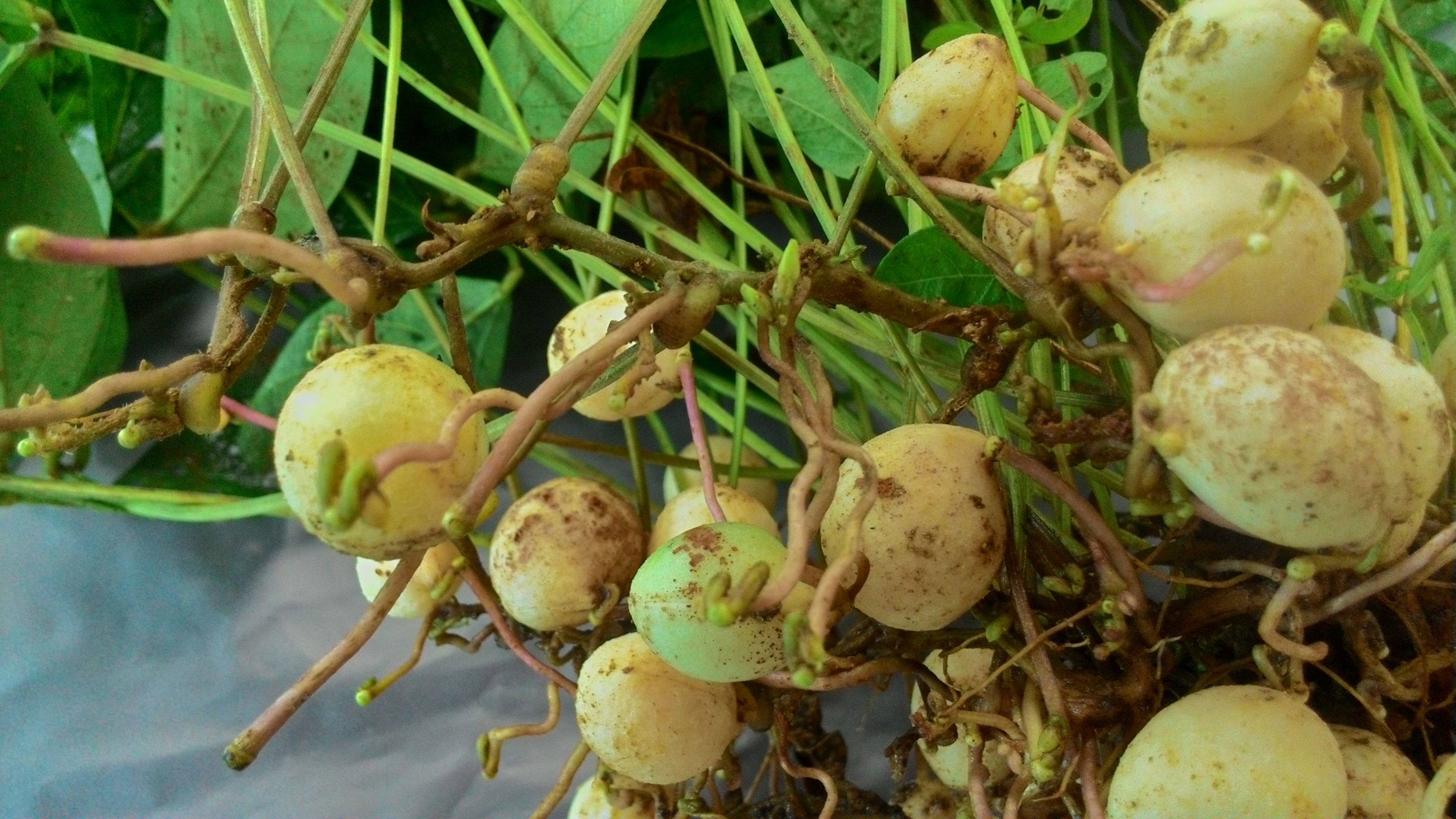
August 11, 2021, by Lexi Earl
Bambara groundnut for food and nutritional security
This post is written by Tan Xin Lin. Xin Lin is a post-graduate student with the BamBREED project, supervised by Dr Susan Azam Ali and Prof Festo Massawe. Her study aims to explore the hard-to-cook phenomenon of Bambara groundnut through the evaluation of physical, hydration, microstructural and compositional characteristics associated with various Bambara groundnut genotypes. She also has five years of work experience as a food technologist with Crops for the Future Research Centre, where Bambara groundnut was one of her main focus areas.
Bambara groundnut has been widely recognised as a climate-smart crop due to its resilience in adverse growing conditions and ability to fix atmospheric nitrogen in the soil. Commonly cultivated by small-holder farmers for subsistence and as a food security crop, the seeds (Figure 1) are prized for their taste and versatility (Figure 2).

Figure 1: The seeds of Bambara groundnut (https://specialtyproduce.com/produce/Bambara_Beans_13137.php)

Figure 2: The seeds can be consumed in various ways. Clockwise from top left: fried Bambara groundnut; braised/cooked Bambara groundnut; bean paste; fried snack made from Bambara groundnut flour.
The nutrient-rich Bambara groundnut contains high levels of complex carbohydrates, protein, phytonutrients and essential minerals, making it an important source of plant-based protein in rural areas where animal proteins are scarce and expensive. The pulse has also been dubbed a “complete food” for its well-balanced macronutrient contents.
Despite its irrefutable potential in contributing to global food and nutrition security, Bambara groundnut is considered an underutilised crop because of its low production and consumption levels. The hard-to-cook (HTC) phenomenon has been identified as one of the major constraints to the wider utilisation of the crop. The HTC Bambara groundnut requires a long cooking time (over three hours) to achieve palatability. Therefore, consumers are more inclined to consume other pulses (for example, common bean and cowpea), which have relatively shorter cooking times.
The extended cooking time implies a higher demand for fuel and water, which not only poses a threat to environmental sustainability, but also causes inconvenience and increased cooking cost for those living in resource-limited regions. The hardening phenomenon also negatively affects the sensory and nutritional quality of the seeds.
The cream-coloured varieties of Bambara groundnut are believed to cook faster, and therefore are more popular among consumers. There are, however, discrepancies of using seed coat colour in determining the cookability of seeds. The development of the HTC defect is a complex issue, as it can be hereditary, but can also be induced by growing and storage conditions (like high temperatures and humidity). Another reason hard-to-cook varieties might be prevalent is because farmers might select for traits like crop yields and drought tolerance, rather than cooking, in order to ensure yield stability and food security. This necessitates studies from multiple aspects to enhance our understanding of the phenomenon before the breeding work can commence.
Given the scarcity of information on the HTC Bambara groundnut, our initial work involves characterising the physical, microstructural, hydration and cooking properties of several genotypes of the crop (Figure 3). These studies are crucial in laying the groundwork and filling the knowledge gap in understanding the variation in cookability between genotypes.

Figure 3: 12 Bambara groundnut genotypes for the initial study
We are also studying the chemical composition that might influence cooking time, and how it differs between easy- and hard-to-cook genotypes. This will enable us to gain an insight into the major contributing factors that render the bean difficult to cook.
Another key focus of the project is to assess low-cost, practical, and sustainable techniques for reducing the cooking time of Bambara. Traditional alkaline salt has been used in the sub-Saharan regions to tenderise legumes and reduce their cooking times. The project will therefore also explore the feasibility of using a salt solution to overcome the HTC phenomenon while ensuring sensory acceptability of the cooked bean.
This project will complement the ongoing breeding activities to develop improved varieties in order to promote the consumption and utilisation of Bambara groundnut.
No comments yet, fill out a comment to be the first

Leave a Reply